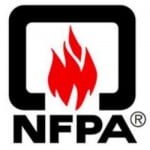The automatic transfer switch—or ATS—makes a standby generator system a fully automatic and reliable source of power during a power outage.
An ATS controls power from a standby generator similar to the way a thermostat controls a home heating and cooling system. Just as a thermostat turns the furnace or air conditioner on and off as needed to regulate temperature, the ATS supplies power from the electric utility or from the standby generator as required. Some Generator Transfer Switches manage the power to ensure that essential appliances are able to run as needed.
Not all automatic switches are the same and making the correct choice is an important decision.
Home Standby Generator Sizing Guide
Transfer Switch Overview
A transfer switch controls the source of power. When an outage occurs, the ATS isolates the electric utility from the home and connects the generator. After the utility restores power, the automatic transfer switch isolates the generator and connects the utility. Isolating the utility lines prevents endangering utility workers from unexpected high voltages. It also protects the generator from damage when power is restored by the utility.
As the name implies, automatic transfer switches work automatically. When the power goes out, they automatically switch from utility power to generator power. A manual transfer switch requires someone to physically move the switch from the utility position to generator position. After the utility restores power, the ATS moves the system back to utility power automatically.
Automatic Transfer Switches come in two main types. One contains only the transfer switch and the included options. It manages the power source for a panel of circuit breakers which may serve an entire building or just a few essential circuits. The other type—often called a Load Center ATS—contains both the transfer switch and the circuit breakers the switch serves.
Automatic Transfer Switch Buyer’s Guide
Managed Power

Kohler 14kW Home Standby Generator System with 200A SE Rated ATS
Most circuits in a home or business are 120-volt circuits limited to 15 or 20 amperes. A few appliances require 240 volts and as much as 50 amperes.
Managing the 240-volt circuits prevents overloading a generator. Because a 20-kilowatt standby generator supplies 80 to 85 amperes at 240 volts, adding one or two high-voltage appliances to the demand can create an overload condition.
An ATS with managed power can prevent the overload by allowing the 240-volt appliances to run only when power is available. If one central air unit is already running, and another wants to start, the managed power option forces the second unit to wait until the first stops.
Did You Know that manufacturers often bundle an ATS with an Air Cooled Generator? The package saves you money on the purchase and simplifies installation.
Other managed loads include electric water heaters, well pumps, electric ranges, or electric dryers. These high voltage loads are often managed by their priority or importance.
Benefits of an ATS and Standby Generator System
Service Entrance Rating
According to the National Electrical Code, a service entrance must incorporate a main disconnect. The service-panel’s main circuit breaker performs this function in many homes. A separate main disconnect in its own panel is incorporated in temporary buildings or in some jurisdictions.
The main disconnect has requirements that exceed the capability of common circuit breakers. In order to act as service entrance equipment, a transfer switch must incorporate these requirements into its design. The Service Entrance (SE) rating allows a transfer switch to replace the existing equipment already performing this function, which simplifies installation and operation.
What is the National Electrical Code?
Current Rating
Automatic transfer switches must safely carry their maximum rated current whether the current is coming from a generator or from the electric utility.
Even if the generator installed can only supply 80 amperes of current during an outage, an ATS installed as a service entrance in a home with 200 ampere utility service must safely handle 200 amps of current, even if the home never uses that much.
Conversely, if an ATS will only serve a limited number of circuits and operates as a sub-panel, it only requires a rating that will handle the maximum current possible. A 50-ampere circuit breaker in the main panel can feed a 50-ampere ATS during normal operation as long as the generator’s main breaker is also 50 amperes or lower—neither the utility nor the generator can supply the switch with more than 50 amperes.
Understanding Watts, Volts, and Amps
ATS Choices
Most manufacturers supply automatic transfer switches designed to work with their standby generators. Each incorporates design features specific to the generators they manufacture. Choosing a transfer switch that was manufactured for use with a specific generator brand and model guarantees it will work as expected.
Manufacturers often bundle standby generators with an ATS. If you plan to purchase a 22-kilowatt standby generator for a home with 200-ampere service, selecting a package with a 200A SE-Rated Automatic Transfer Switch and 22-Kilowatt Standby Generator is probably your best option. The features provided by the generator and by the transfer switch will govern your decision.
Home Standby Generator Installation Guide
Updated August 3, 2018




















